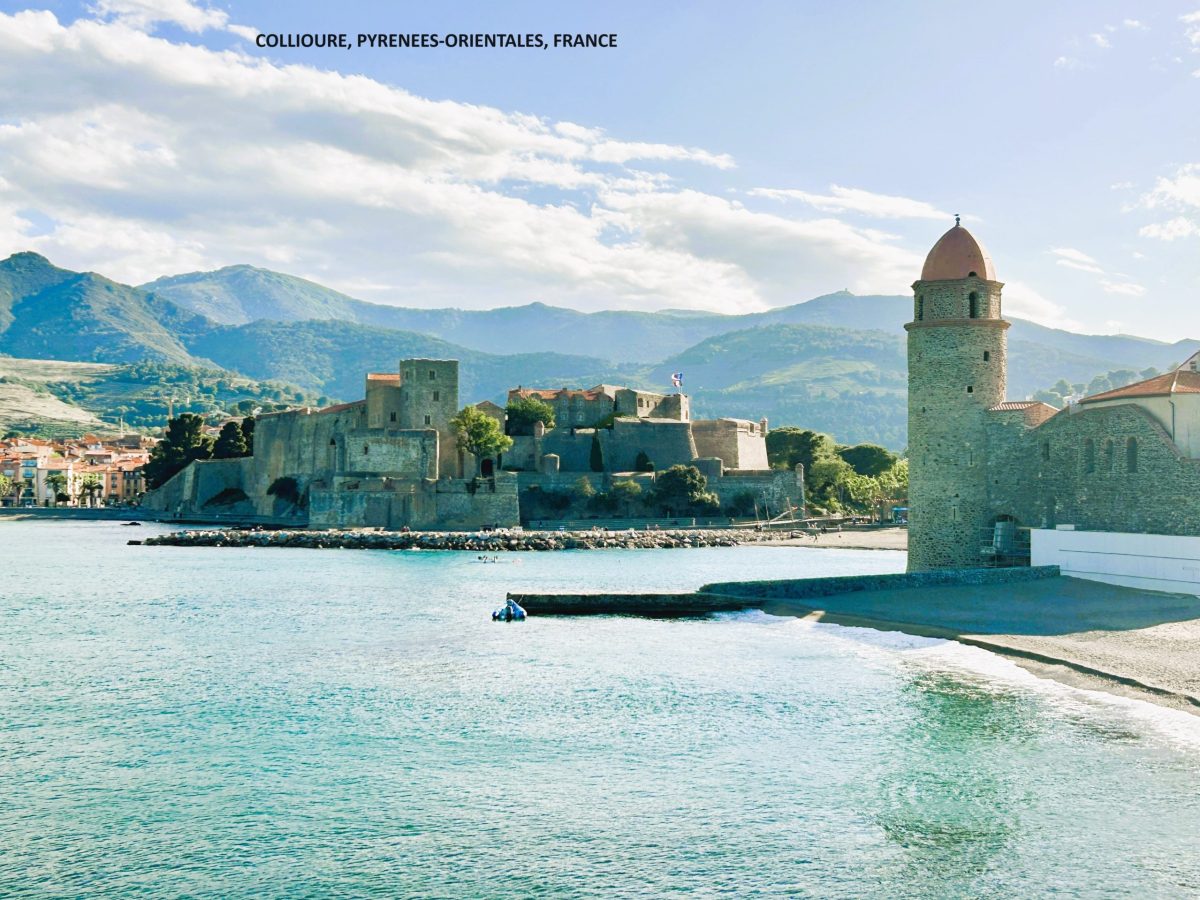Ambleteuse is an interesting little town on the Opal Coast between Boulogne and Calais. We were staying in the neighbouring village of Audresselles but I took time out to visit Ambleteuse during the afternoon.
The place is steeped in history having been one of the ports from which Julius Caesar was said to have embarked from on his unsuccessful invasion of Britain in 54 BC (not that it was called Britain in those days). The Saxons also invaded from here and Napoleon Bonaparte stationed troops in the area in readiness for his planned (but ultimately aborted) invasion of our island. Indeed, General Claude JA Legrand, commanding Napoleon’s 3rd Infantry Division, stayed in Ambleteuse’s 17th century fort (one of Vauban’s creations) at the mouth of the River Slack in anticipation of the invasion. From what I saw of the fort, he couldn’t have enjoyed the most comfortable of stays.
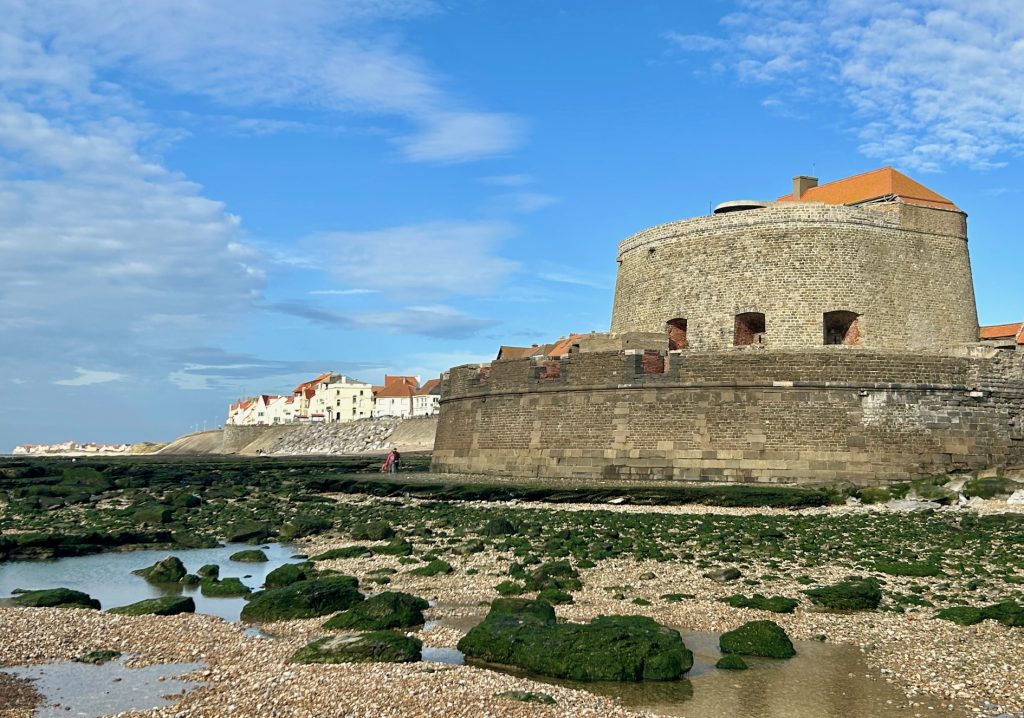
The fort has been destroyed and rebuilt on more than one occasion, the last time being after it was occupied by German troops during WWII. During the summer months it opens as a museum but, if it’s museums you want, there is a WWII museum at the edge of Ambleteuse on the road to Audresselles. It is unlike most of the WWII museums that have mushroomed across Normandy in that, except for some artillery pieces and a Sherman tank placed outside, it’s exhibits are mostly confined to the uniforms and accessories of the combatants.
The beaches in Ambleteuse and Audresselles cannot be considered among the best along the Opal Coast, being narrow and stony. The seafronts in both places are also different from others in Normandy in that there are neither shops nor restaurant-bars along the small promenades; just houses and the odd WWII bunker built by the Germans in anticipation of an Allied Invasion near the Pas de Calais.
The elegant Eglise Saint Michel is definitely worth a visit. I cannot tell you much about this church but, inside, it is stunningly simple…I like it.
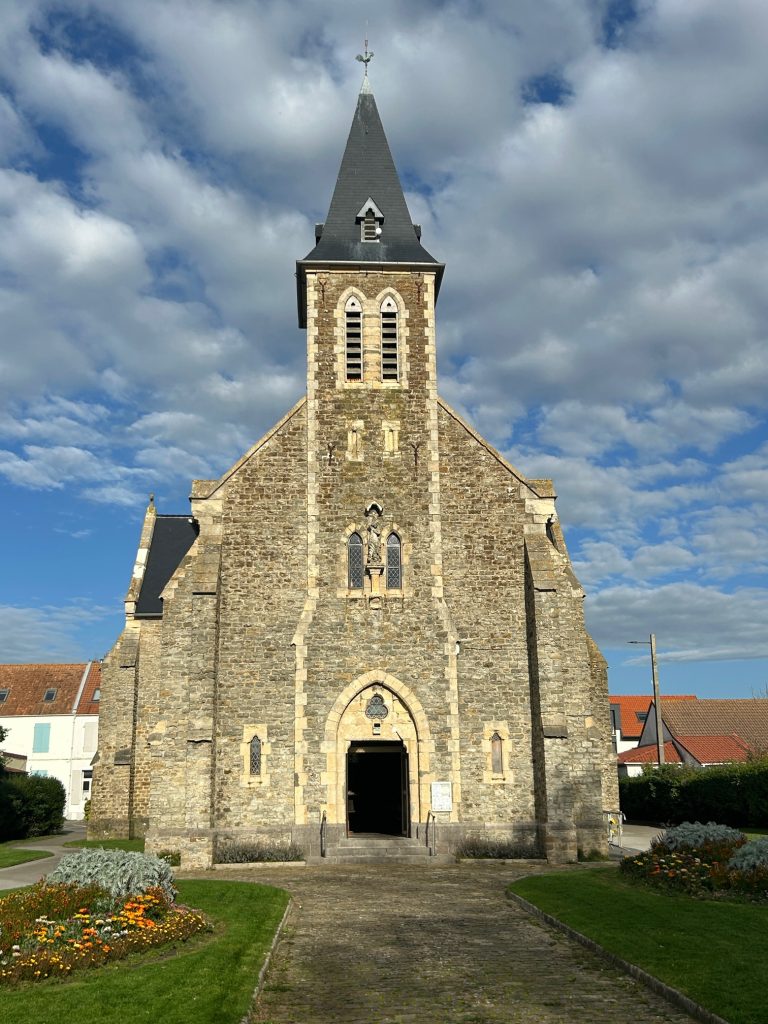

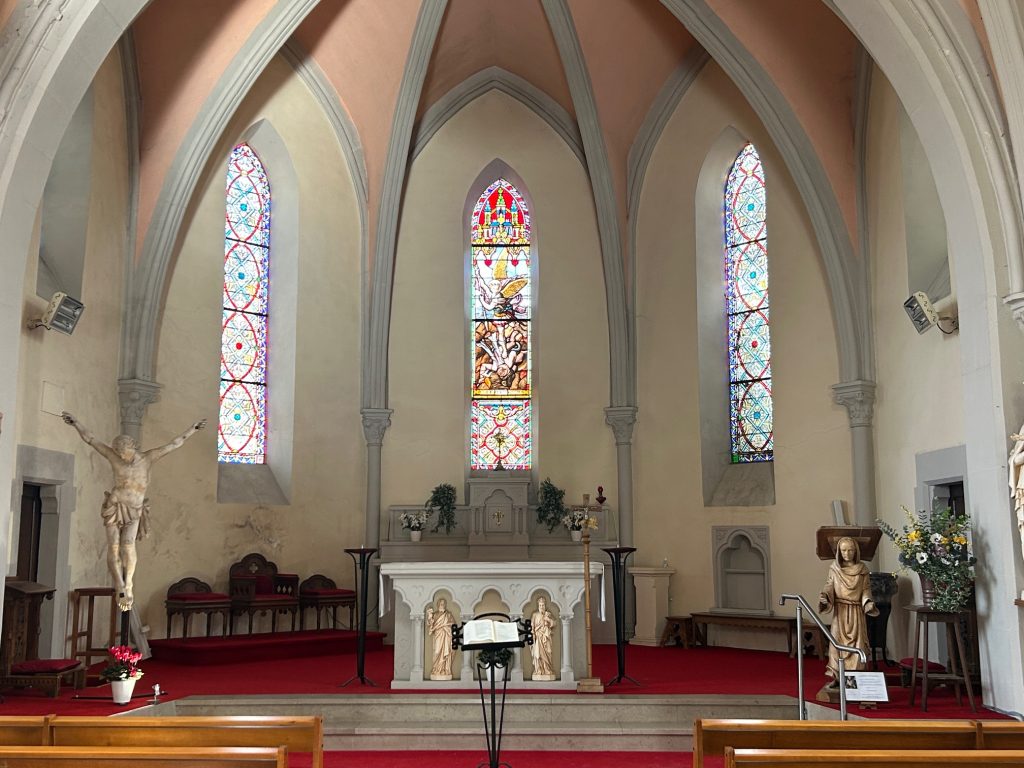
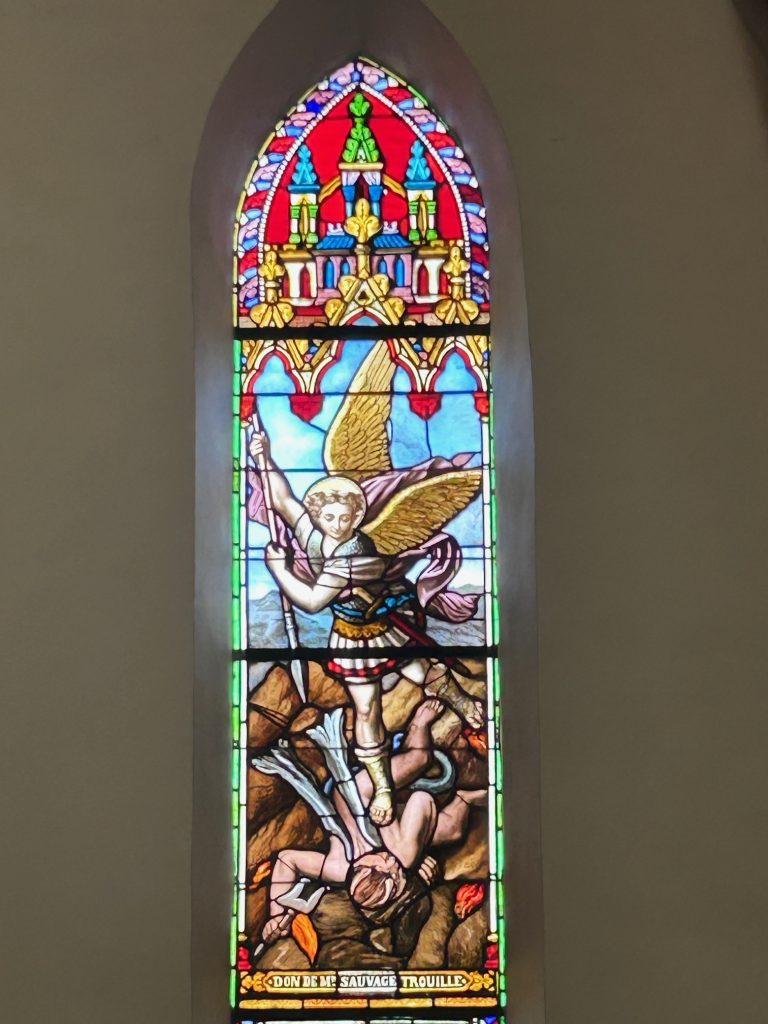

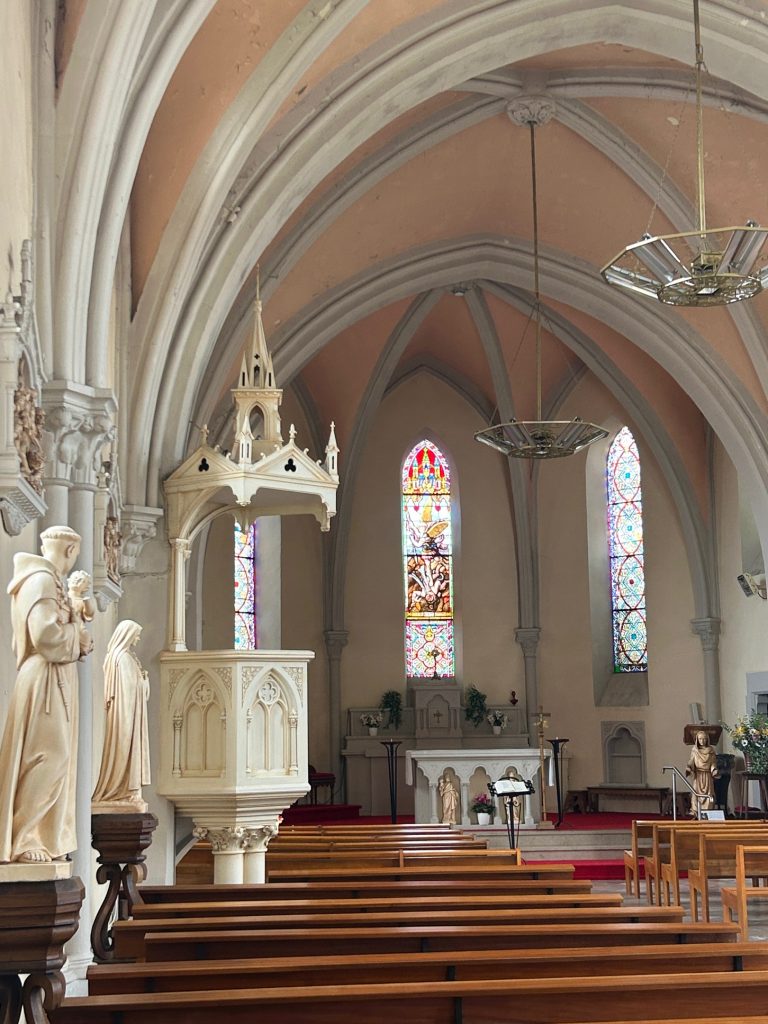
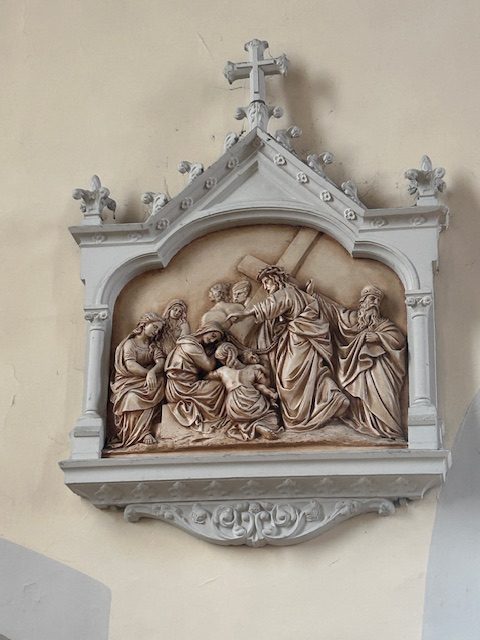
To finish, I’m reproducing just one of the photos I took in Audresselles and that was along the coast towards Les Deux Caps; Cap Blanc Nez (made of chalk) and Cap Gris Nez (made of clay). These are the closest points in France to the British Coast and numerous German artillery batteries were sited there during WWII to fire upon Dover. In fact, during the course of WWII almost 10,000 buildings in and around Dover were damaged by shellfire from these batteries with more than 200 civilians being killed and hundreds more injured. Looks quite peaceful now, doesn’t it?
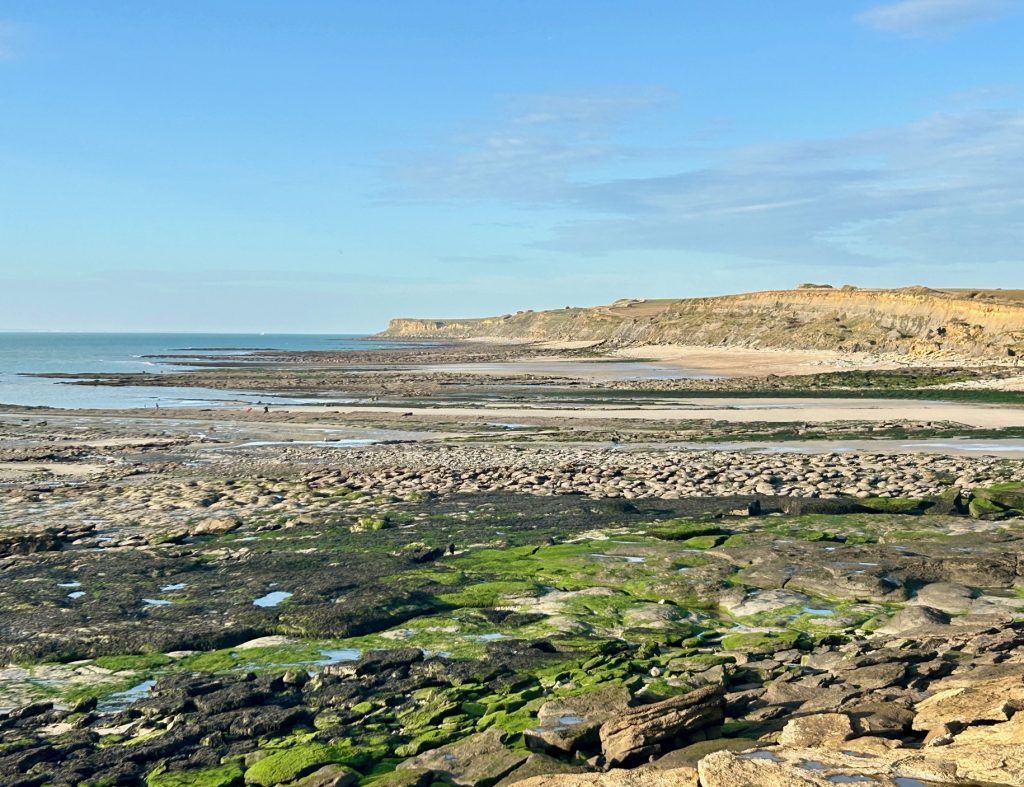
We‘re booked on the P&O ferry to Dover in the morning. Tour 10 ends here. Roll on the next one!!

